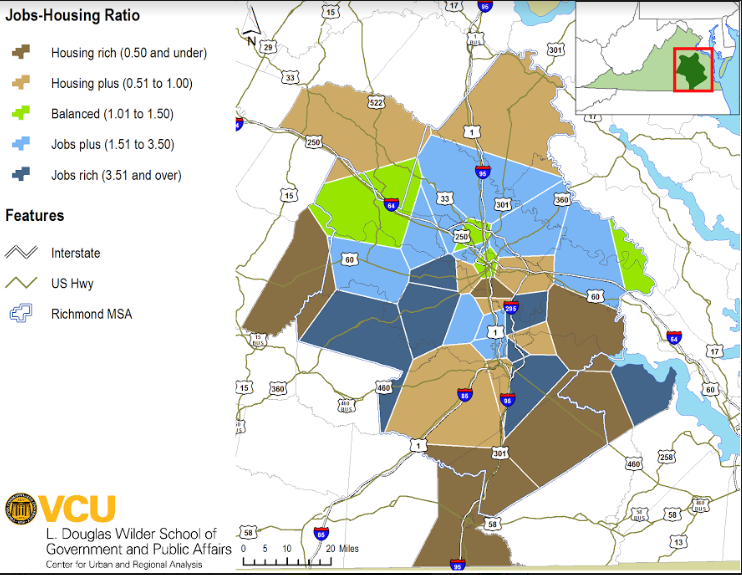News
Wilder School Study Finds Affordable Housing Not Located Near Available Jobs in the Richmond Region

A new report issued by the L. Douglas Wilder School of Government and Public Affairs at Virginia Commonwealth University finds that affordable housing isn’t located near available jobs in the Richmond Metropolitan Statistical Area.
The report, “Understanding the Jobs–Affordable Housing Balance in the Richmond Region,” documents the geographic location of jobs generally available for households requiring low-cost housing.
“This is the first time this pattern has been analyzed, and it documents a metropolitan problem. Affordable housing and available jobs are not located in close proximity,” said Tom Jacobson, the lead researcher of the Wilder School’s Center for Urban and Regional Analysis, which conducted the report.
Low-cost housing units, which includes homes and apartments, are assessed at $109,000 or less, while modest-wage jobs are those with annual salaries of $27,664 or less.
There are 67,000 more modest-wage jobs than low-cost housing units in a suburban donut around the city, according to the report. Retail and service jobs are heavily located in Chesterfield, Hanover and Henrico counties. Yet affordable housing is concentrated in the Southside and east end of the city, close-in suburban neighborhoods, and rural and small town areas on the fringe of the metropolitan area.
“A well-planned metro area is a community of short distances,” said Jacobson, a former Chesterfield County planning director who’s also an adjunct instructor at the Wilder School. “Households should have the ability to choose to live close to their job. This is especially critical for lower income households with no or one car.”
The area’s public bus system provides only partial connections between employment and housing locations. An analysis of modest-wage jobs and low-cost dwelling units revealed that the GRTC Transit System provides access to 52 percent of the region’s low-cost housing and 45 percent of modest-wage jobs within one-quarter mile of a bus stop.
The study also documents the impact of higher density, lower cost townhouse and apartment projects on surrounding single-family neighborhoods. Six projects in the metropolitan area were analyzed before and after construction and no notable long-term impact resulted on crime rates, property values and property sales.
“Residents in the city and suburbs alike fear that higher density, lower cost housing will increase crime and negatively impact their home property values. This study and others document that this fear is usually unfounded,” Jacobson said.
The study provides a strong guide for future affordable housing and business locations, expansion of the public transit system, and sidewalk construction. The Broad Street corridor, the Chesterfield Towne Center area and a wide span of Chesterfield County are priority areas for affordable housing development. The study recommends that affordable housing units be located within mixed income projects.